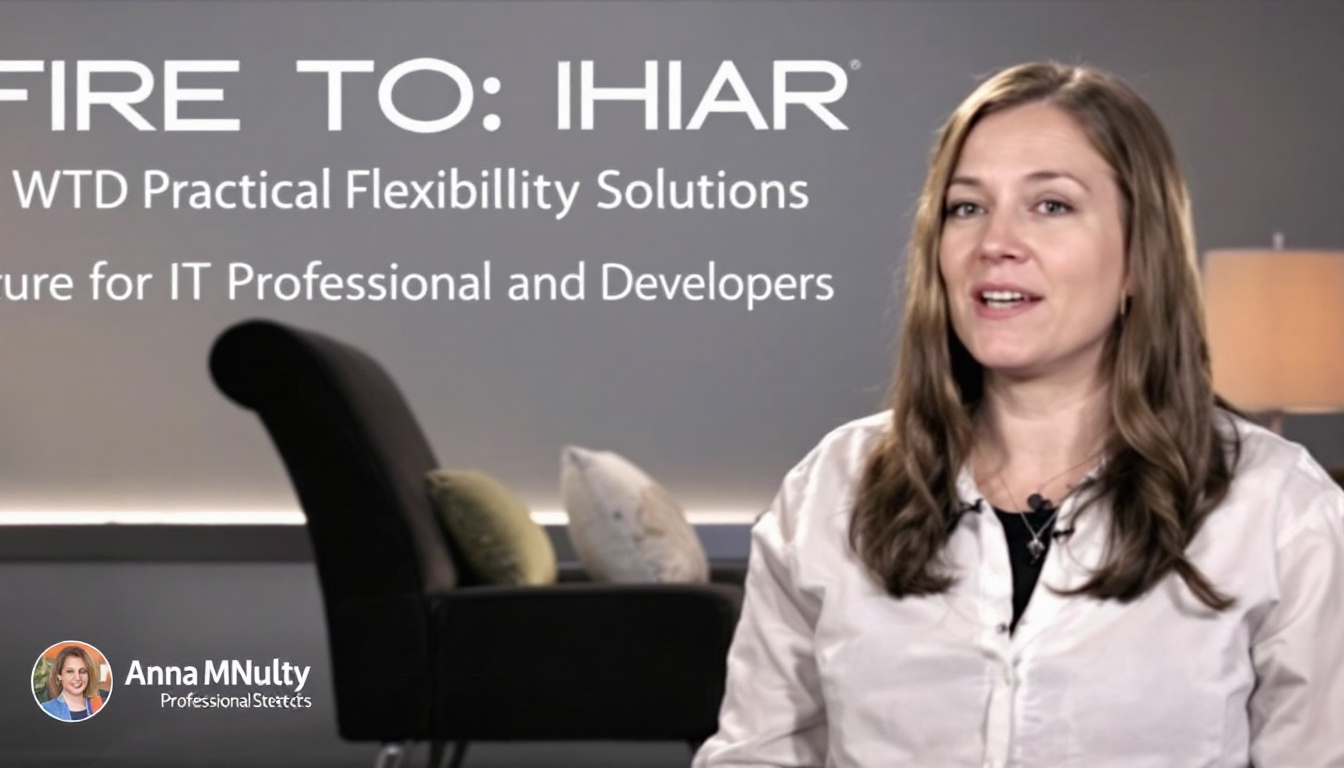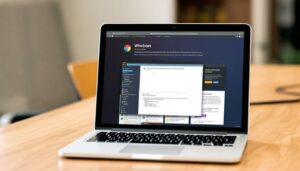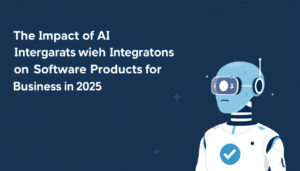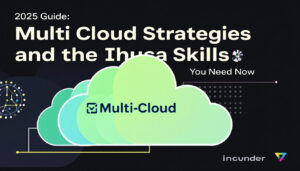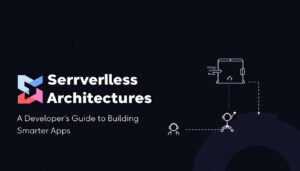Anna McNulty has become a recognized figure for flexibility routines, particularly among audiences with high amounts of desk time. Her approach emphasizes achievable stretches that improve mobility for people who spend many hours sitting. The popularity of her routines is rooted in practicality and clear results, which appeal strongly to IT professionals, developers, and business leaders seeking relief from stiffness and muscle fatigue.
By drawing on proven stretching methods, McNulty offers targeted exercises that fit seamlessly into busy daily schedules. Her content provides direct benefits such as reduced discomfort, better posture, and improved concentration. This combination of accessibility and effectiveness makes her stretching programs valuable for anyone seeking sustainable improvements in physical wellbeing within a sedentary work environment.
Who is Anna McNulty?
Anna McNulty is widely known as a Canadian flexibility expert and content creator. She gained recognition online for her advanced stretching routines, which have attracted millions of followers interested in practical mobility solutions. Her guidance appeals not only to athletes but also to professionals in technical and business fields who seek realistic ways to counteract the negative effects of prolonged sitting.
 Photo by John Tekeridis
Photo by John Tekeridis
Professional Background
Anna McNulty began her public career at a young age, sharing her flexibility journey and self-taught stretching exercises. Her background includes dance and cheerleading, but she is best known for her work as a self-taught contortionist. Anna publishes video tutorials, tips, and full-length routines through her YouTube channel and other platforms. She focuses on clear, actionable techniques suitable for all flexibility levels. For a comprehensive overview of her career, visit her Wikipedia page.
Online Presence
Anna’s digital footprint is extensive. Her YouTube channel alone has amassed millions of subscribers, making her one of the most recognized creators for flexibility routines worldwide. She is also active on Instagram, TikTok, and other platforms, where she shares short-form content, challenges, and daily mobility tips. Her approach is consistent, with regular updates that support ongoing improvement for her followers.
- YouTube: Full stretching tutorials and guided routines.
- Instagram: Short clips, motivational posts, and personal updates.
- TikTok: Bite-sized challenges and flexibility demonstration videos.
Her broad online reach makes her content accessible to a wide international audience, from students to executives.
Influence in Flexibility and Stretching
Anna McNulty has become an authoritative voice in the flexibility space, especially for those seeking safe, achievable stretching techniques. Her influence extends beyond performance arts; many of her stretches are designed for people who experience tightness from office work and sedentary habits. Features in industry articles and profiles such as The Evolution of Anna McNulty: From Child Prodigy to Flexibility Icon highlight her transition from online personality to recognized expert.
She is known for:
- Adapting advanced techniques for beginners and desk-bound professionals.
- Promoting daily movement as a tool for long-term health.
- Building an inclusive community focused on realistic progress.
Her straightforward teaching style ensures that routines are approachable, reducing the risk of injury and supporting steady improvement, regardless of experience level.
Credentials and Recognition
While Anna McNulty is primarily self-taught, her dedication to flexibility and movement has earned her formal recognition. In 2023, she was named YouTube’s top Canadian creator, underlining her influence and reach. Her success underscores the practical impact of her routines, which have helped many find relief from muscle stiffness and rediscover physical comfort. More details about her achievements are profiled in this ExtensionWorks article.
Anna’s commitment to clear, sustainable flexibility routines continues to support a diverse range of individuals, including busy professionals and those new to stretching.
Science-Backed Benefits of Stretching for Tech Professionals
The demanding routines of IT professionals, software developers, and business leaders often include long hours seated at desks, which can take a toll on both physical and mental health. Incorporating regular stretching—such as the routines shared by Anna McNulty—offers researched advantages that address the specific challenges of sedentary work. The following evidence-based benefits illustrate why stretching deserves a place in every professional’s daily regimen.
Improving Posture and Preventing Back Pain
 Photo by Ivan Samkov
Photo by Ivan Samkov
Poor posture and recurring back pain are common complaints among those with desk-bound roles. Prolonged sitting weakens the core and tightens hip flexors and back muscles, often resulting in discomfort and misalignment. Research confirms that regular stretching:
- Helps maintain muscle flexibility and supports proper joint function.
- Reduces muscle stiffness, lowering the risk of chronic back pain.
- Counteracts the compressive effects of sustained computer use on the spine.
A consistent stretching program can ease tension in the lower back, shoulders, and neck, making it easier to maintain a more neutral and healthy posture throughout the workday. The Harvard Health article on the importance of stretching explains how flexibility protects joint health and mobility over the long term.
Boosting Productivity and Focus
Stretching does more than benefit the body; it contributes to a clearer, more focused mind. Short, scheduled stretch breaks:
- Increase blood flow to the brain, supporting alertness and quicker thinking.
- Help minimize fatigue by easing musculoskeletal discomfort from static work.
- Break up repetitive routines, refreshing mental energy for more effective problem-solving.
Studies suggest that implementing stretch routines in office environments improves concentration and overall cognitive function. In a clinical investigation, a three-month stretching program not only reduced physical complaints but also led to greater workplace comfort for office staff (source). This approach is especially relevant for tech professionals who rely on sustained concentration for software development, troubleshooting, or strategic planning.
Supporting Overall Well-Being and Reduced Stress
The cumulative pressure of deadlines, meetings, and digital engagements can contribute to stress and diminished well-being. Structured stretching routines bring measurable wellness benefits:
- Stimulate the release of endorphins, fostering a sense of calm and relaxation.
- Encourage physical self-awareness, helping recognize and address early signs of tension or stress.
- Provide moments of mindful movement, which many experts compare to meditative practices in their ability to steady the mind.
Regular stretching supports holistic health, making it easier to navigate demanding workload cycles without burnout. When combined with ergonomic moves and periodic activity throughout the day, flexibility routines such as those featured in Anna McNulty’s programming allow professionals to sustain both mental and physical resilience.
These science-supported outcomes underscore why integrating stretching into the daily routine isn’t just about comfort—it’s an effective strategy for boosting occupational performance and quality of life.
Breakdown of Popular Anna McNulty Stretch Routines
Anna McNulty offers a systematic approach to flexibility that suits people with demanding, sedentary jobs. Her most popular stretch routines focus on the entire body, as well as specific movements for splits, backbends, and unwinding before bed. Many of these methods are designed for accessibility—participants do not need equipment, and routines can fit within short windows of time. Below, each routine is outlined to help you identify which stretch best fits your work and recovery goals.
Full-Body Stretch for Flexibility
 Photo by Maksim Goncharenok
Photo by Maksim Goncharenok
Anna McNulty’s full-body stretch routines provide a balanced sequence that targets all major muscle groups. Each session typically lasts 10 to 20 minutes and is designed to loosen muscles that tighten during prolonged sitting. Her approach emphasizes gradual progress, preventing both overexertion and injury.
Key features of her full-body stretch include:
- Sequence Structure: Movements begin with dynamic stretches, such as arm circles and side bends, to increase blood flow.
- Progression: The routine moves into static holds that lengthen muscles in the hamstrings, quadriceps, and shoulders.
- Accessibility: No special equipment is needed, and modifications are suggested for beginners.
- Posture Benefits: These routines help counteract rounded shoulders and stiff hips, common in those who work at desks.
The full-body routine is suitable for professionals who need an efficient, daily reset. Consistency in following these routines often results in improved shoulder mobility and reduced lower back tension, making them a practical solution for technical and business environments. For more approaches to maintaining flexibility while working, see the extended guide on flexibility exercises for beginners.
Splits and Backbend Stretch Routine
The splits and backbend routine is designed for gradual gains in mobility and range of motion. Anna McNulty structures these sessions to be both approachable and effective, focusing on hip openers, hamstring stretches, and thoracic mobility. While splits can seem unattainable for some, her technique involves incremental progress and consistent practice.
This routine revolves around:
- Warm-up Segment: Starting with gentle lunges and leg swings to avoid muscle strain.
- Deep Stretch Holds: Long durations in hip flexor and hamstring stretches make progress possible over time.
- Backbend Progressions: Movements like bridge pose and supported backbends build strength and flexibility in the spine.
- Adaptability: Suitable for both beginners and those with moderate flexibility, with adjustments for different mobility levels.
Including a split and backbend routine into your week supports not only flexibility but also spinal health, which is crucial for those who spend many hours seated.
Bedtime Stretch to Unwind After Screen Time
Anna McNulty’s bedtime stretch routine focuses on gentle movements that help release the tension accumulated from prolonged screen exposure. The main aim is to relax the body and mind, promoting quality sleep and improved physical recovery.
Notable elements of this routine are:
- Gentle Mobility: Emphasis on slower, calming stretches for the neck, shoulders, and lower back.
- Breathing Techniques: Incorporation of deep, steady breaths to support relaxation.
- Short Duration: Designed to be completed in under 10 minutes, making it easy to commit to nightly.
- Routine Simplicity: Accessible movements requiring only a soft surface, such as a yoga mat or bed.
Consistent use of a nightly stretching routine can reduce discomfort from daily screen use and support regular sleep patterns. For guided routines, Anna’s official channel, Anna McNulty Stretches, provides step-by-step instructions tailored for nightly unwinding.
These popular routines from Anna McNulty allow busy professionals to address mobility, posture, and stress—all in manageable, effective sessions.
How to Integrate Anna McNulty Stretches into a Tech Lifestyle
Anna McNulty’s stretching routines adapt well to demanding work schedules. For IT professionals, developers, and business leaders, building her movements into the day improves comfort and focus without requiring large time commitments. Consistent use—whether at a desk, after work, or in the evening—can counteract the physical effects of extended screen time and limited movement.
Desk Stretches You Can Do at Work
Small, frequent stretches during work hours reduce stiffness and support musculoskeletal health. Anna McNulty’s simpler movements fit naturally into short breaks and can be done without leaving your workspace.
- Neck Rolls: Gently circle the head to ease tension after long periods of typing.
- Seated Torso Twists: Stay seated and rotate your upper body left, then right, to release lower back tightness.
- Shoulder Shrugs and Arm Circles: Relieve shoulder fatigue with sets of gentle movements. Raising arms overhead also helps reset posture.
- Seated Forward Fold: Sit at the edge of your chair, feet flat, and fold forward until you feel a gentle hamstring stretch.
Schedule these movements for two to three minutes every hour. These micro-breaks contribute to focus as well as physical well-being. Stretches at work complement ergonomic adjustments and can prevent problems from developing over time.
 Photo by Johnny Garcia
Photo by Johnny Garcia
Post-Work and Evening Stretch Sessions
After the workday, longer routines improve recovery and reset the body for restful sleep. Anna McNulty’s full-body and targeted flexibility programs are efficient and provide structure to your evening routine.
- Full-Body Routine: Spend 10–15 minutes on a balanced set of stretches targeting hips, quads, shoulders, and back.
- Targeted Stretching: Focus on problem areas, especially if you experience regular tension in the hamstrings or neck.
- Relaxation Techniques: Pair stretching with slow, controlled breathing to relieve physical signs of stress.
Performing these sessions three to five times per week supports mobility gains and habit formation. For those needing additional structure, Anna offers guided videos that reinforce proper form and timing.
Setting Goals and Tracking Flexibility Progress
Data-driven professionals often prefer measurable improvement. Tracking progress increases motivation and highlights the results of regular stretching.
- Digital Tools: Use free apps or a simple spreadsheet to log completed sessions and note range of motion changes.
- Milestones: Set achievable targets, such as holding a stretch longer or reaching greater depth in a forward fold.
- Frequency Tracking: Record daily or weekly routines and assess consistency at the end of each month.
Consistent tracking reveals small gains, making progress visible even when changes feel incremental. Measurable metrics, such as time spent or degree of flex achieved, provide clear feedback. Accessible approaches to goal setting encourage ongoing participation, making stretching a sustainable habit for those with demanding schedules.
For more tips on building effective stretching routines, explore resources covering flexibility exercises for beginners to help refine your technique and maximize results.
Tips for Success: Avoiding Common Flexibility Training Pitfalls
Consistency and safety are two pillars of effective flexibility training. Many professionals, pressed for time and eager to see results, unintentionally fall into common errors that limit progress or lead to discomfort. By focusing on correct technique and sound habits, stretching—such as those taught by Anna McNulty—can yield lasting movement benefits without setbacks.
Warming Up Properly Before Stretching
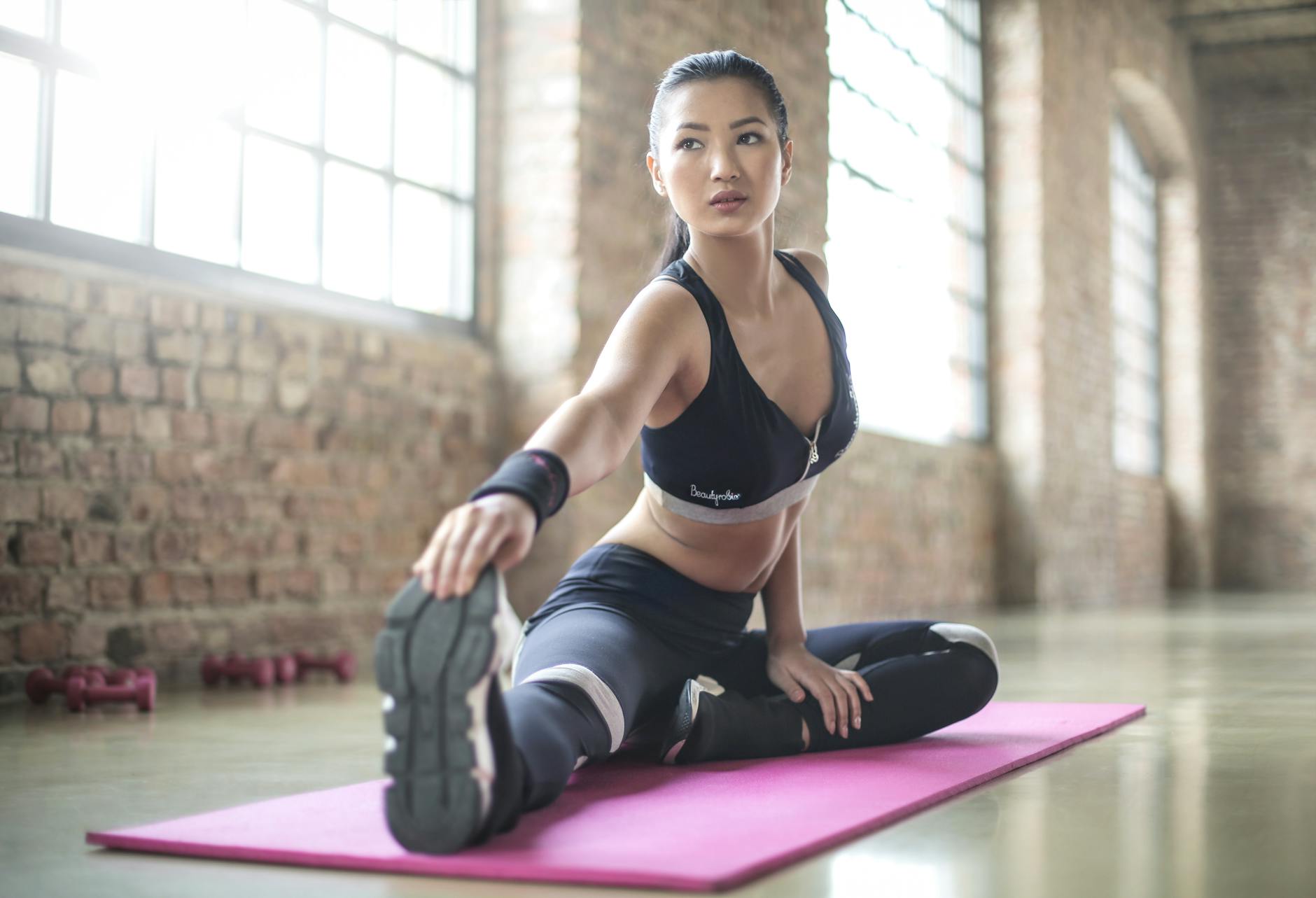 Photo by Andrea Piacquadio
Photo by Andrea Piacquadio
Engaging muscles with proper warm-up prepares the body for stretching. Skipping this step can cause strain, reduce effectiveness, and increase the risk of injury. An effective warm-up does not require elaborate routines. Light activity such as brisk walking, arm swings, or simple joint rotations raises body temperature and boosts blood flow.
- Warm up for at least five minutes.
- Include movements that mimic the upcoming stretches.
- Keep activity gentle but active—avoid static holds during this stage.
A warm-up session ensures muscles are ready for lengthening, reducing resistance and making routines safer. For more detailed insight on minimizing flexibility mistakes, review the list of common stretching errors at The Most Common Stretching Mistakes.
Listening to Your Body and Avoiding Overstretching
Success in flexibility training comes from patience, not force. Overstretching can lead to soreness, muscle pulls, or even joint damage. Listen for sharp discomfort or pain—these are signs to reduce intensity immediately. Mild tension is expected, but pain signals the stretch has gone too far.
Professional recommendations include:
- Never push stretches to the point of pain.
- Gradually increase depth over weeks, not days.
- If soreness lasts more than a day or worsens with each session, take extra rest or consult a specialist.
These guidelines protect progress, supporting flexibility gains without setback. A balanced approach keeps the process positive and sustainable. Discover more about safe progression and flexibility safeguards in the article on Stretching Mistakes & Tips for Flexibility.
Staying Consistent Without Overcomplicating
Routine matters more than perfection. Many lose motivation by setting complex routines that are tough to maintain. Consistency—doing simple stretches regularly—delivers better results than ambitious sessions followed by long breaks.
To foster lasting habits:
- Choose 3–5 stretches and repeat them daily or every other day.
- Track progress with a notebook or digital app.
- Limit your routine to 10–20 minutes.
Reducing barriers makes regular practice easier, especially for those balancing work and personal obligations. Straightforward routines help professionals see clear progress without wasting time. For structured beginner routines that support ongoing flexibility and avoid unnecessary complexity, see the page on flexibility exercises for beginners: benefits, techniques, and common mistakes.
Staying patient and consistent, while steering clear of common mistakes, allows flexibility training to remain a steady support for long-term health and mobility.
Conclusion
Anna McNulty’s stretch routines present a clear approach for improving flexibility and comfort, especially for people in technical or high-demand desk roles. Integrating her methods into a daily schedule supports joint health, posture, and reduces the fatigue that comes from long hours at a workstation. The result is not only greater comfort but also improved focus and productivity over time.
Building a sustainable stretching habit is practical and does not require special equipment or advanced skills. Progress is incremental but noticeable with consistency. Explore more options for active recovery and maintaining effectiveness on the job in related articles, such as strategies for boosting productivity with cloud automation.
Adopting Anna McNulty’s routines can help prevent common mobility issues tied to sedentary work. Thank you for reading—consider sharing your experience with these stretches and reflecting on the long-term benefits for your health and professional performance.

